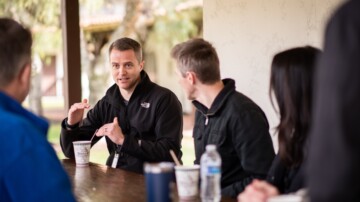Change Management for Grantmakers: The Center for Disaster Philanthropy’s Journey to Better Grantmaking

In early 2022, the Center for Disaster Philanthropy began an organization-wide grants change management review. The goal was to become better grantmakers by completing a review of our practices, processes and forms. We incorporated learnings and feedback from grantee partners. We also ensured that we reflected industry best practices for funders and our own organizational values were embedded deeper into our grantmaking practices and partnerships.
This was a year-long project that required CDP to closely examine our processes and have bold conversations about how we wanted our grantmaking to look. These were the top three things we implemented based on our findings:
- Simplified our application: We cut down on the number of questions we asked by eliminating redundant ones and stuck to only what was needed for funding decisions.
- Increased flexibility with reporting: We now have a process so grantee partners can submit applications and reports in alternative formats, such as through email or over Zoom.
- Applied an equity lens: We aim to grant funds with an equity lens, focusing on the needs of historically or currently marginalized and at-risk populations along with more local, on-the-ground organizations.
Change management can be a long and uncomfortable process, but the introspection and analysis help you find ways to improve and more closely align with your mission. When thinking of embarking on your own grants change management, here are a few key factors you should make sure are part of your process.
Choose the Method that Is Right for Your Organization
When deciding on the ideal method for kicking off CDP’s change management process, we knew we wanted it to be collaborative among the eight-person grantmaking team, with everyone having the opportunity to lead. We also sought to include all departments within CDP, knowing that any changes to our process would ultimately impact the entire organization.
Choosing a change management process that is well-suited to your organization’s needs, culture, and goals will ultimately increase the likelihood of successful change implementation. While there are a few ways to complete a change management process, the big question is who should be included in the process. In addition to the grantmaking team, consult a representative from each department early in the process. Getting the right people in the room is key.
Include Stakeholder Engagement
In addition to our internal discussions, CDP partnered with the Center for Effective Philanthropy (CEP) in 2022 to survey 254 of our grantee partners for our first Grantee Perception Report (GPR). This feedback provided a good framework for understanding the experience and needs of our partners. We wanted to ensure active involvement and communication with all stakeholders involved in the grant process. This includes grantmakers, donors, grantee partners and any other relevant parties. Engaging stakeholders from the outset fosters buy-in, promotes transparency and reduces resistance to change.
Use the Resources Already at Your Fingertips
The grant management system we use, Blackbaud Grantmaking, already has many processes and flows built into the system. By making the most of the resources already at your disposal, you can streamline processes, enhance efficiency, cut down on duplication and achieve your objectives more effectively. Here are two of the features that CDP started to incorporate into grantmaking:
Tax Status Verify
For the United States and Canada-based organizations, the tax status verify tool updates the legal status of each organization. This process reduces the need for an organization to provide further documentation on their tax status.
Watchlists
For those organizations that need to comply with guidelines set by the Treasury Department’s Office of Foreign Assets Control (OFAC), our grant management system provides checks on key staff.
Having both these checks in one place cuts down on work for the grantmakers and grantee partners while providing an audit trail for compliance purposes.
Give the Process the Time It Needs
This process for CDP was much like an onion with many layers. We would decide on something and then realize it was a much more complicated change than initially expected. These layers made us push back our completion timeline more than once and go back to the virtual drawing board, but it allowed us to make more profound organizational changes.
For process changes like this, there isn’t a set timeframe for each phase of this process. Time allows for thorough planning, thoughtful communication, and gradual cultural shifts within the organization. It provides space for training, testing, and ensuring that employees are equipped to adapt to the new process. Hurrying through these stages increases the chance of neglecting crucial issues or missing possible enhancements.
Track Your Progress
One step in the process that was important for CDP was keeping group notes and designating one or two people to coordinate the process, including ensuring meetings happened and approvals were sought.
Continually monitoring progress proves invaluable not only for future reference but also for guaranteeing the fulfillment of all the objectives your organization has set out to achieve.
While the thought of starting a grants change management process at your organization might seem daunting, my hope is that you are now motivated to improve your grantmaking processes, whether you use CDPs methodology or a different one. Embracing a culture of continuous improvement is essential in any organization, especially in the realm of grantmaking, where the impact directly affects those in need.
It’s difficult to undergo a significant organizational change without good data. As part of your planning for a major shift in your grantmaking, take a close look at your data health. Learn how with the white paper, How Grantmakers Can Improve Data Health and Maximize Impact.



